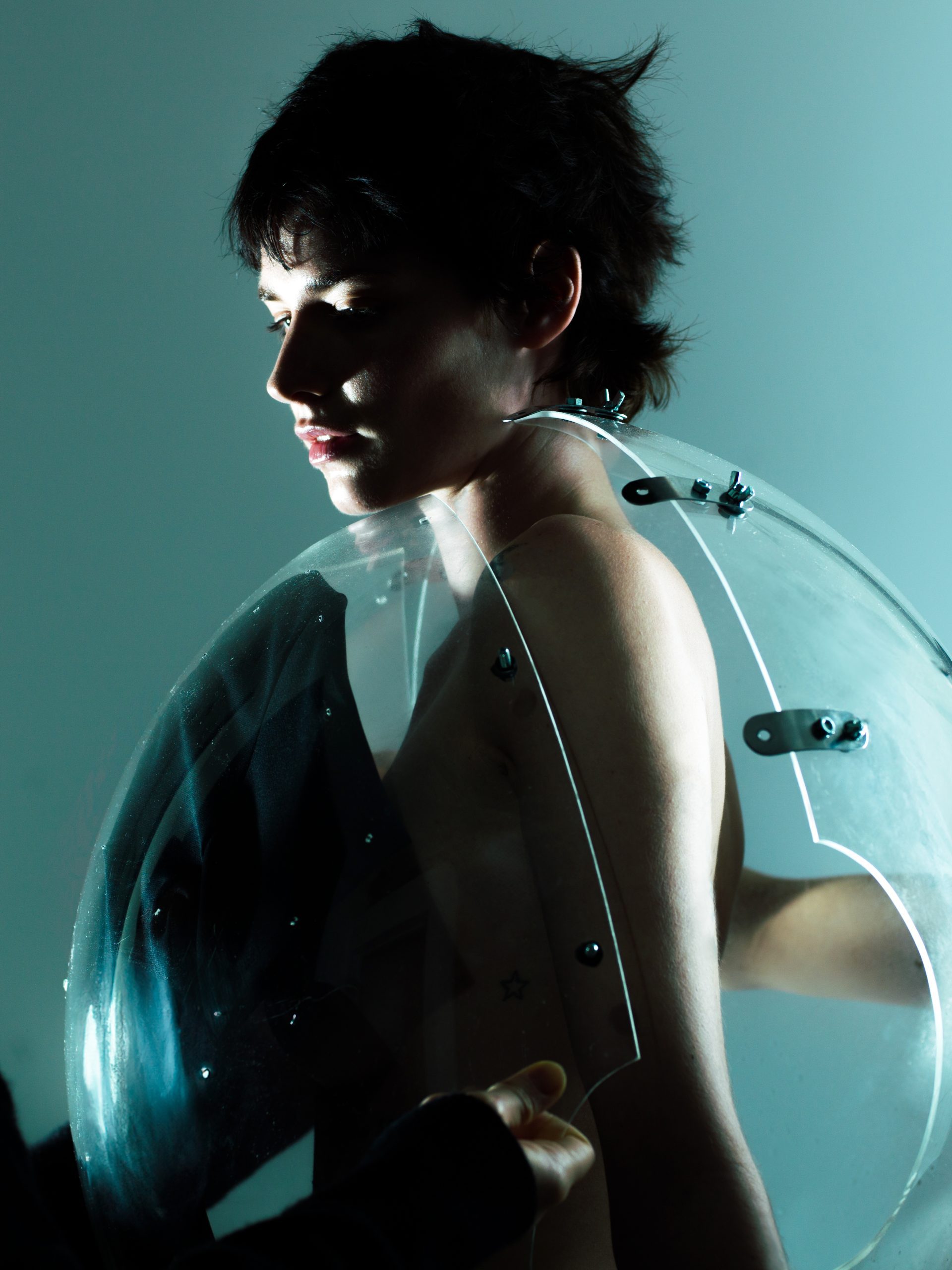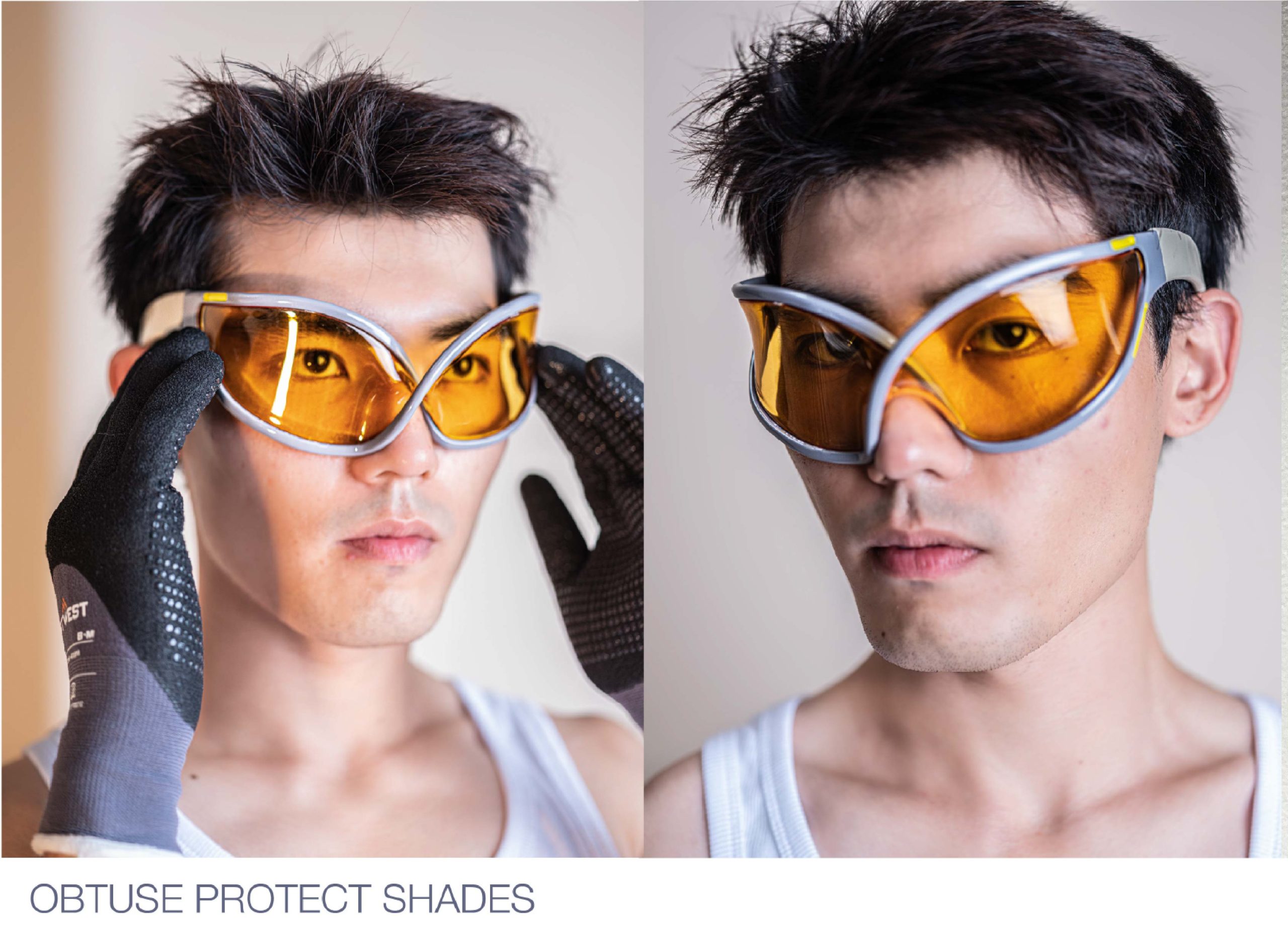Stylist and Creative Director: Morgan Bienvenue Photographer: Anneka Bunnag HMUAt: Ann Gior Model: Marina Mion Lighting Tech: Eli Kravitz Photo Retouching: Prishtina Gjonaj
Trends have always started the same way: with members of high society demonstrating their wealth, fame, and power by showing off how quickly they can change their looks, creating a trickle down effect. The only difference today is who has that kind of influence over “us” to determine what’s in “now”. The line between celebrity and the masses has become blurred and the time between now and then is the blink of an eye.
76% of survey respondents are bored by global celebrities. (HIGHSNOBIETY, 2024)
Trends were not something the fashion industry invented, but merely cultivated. The Parisian fashion houses would host private viewings of their latest couture collections for only their highest-spending clients. Department store buyers would have to pay a premium on a few of the designer’s garments as their ticket into these shows so that they could see the collection before it went to market. This allowed them to mimic and sell similar garments to the American audience. It created distinct selling seasons, which then encouraged stores to promote their in-store offering around these runway trends fitting nicely into customers’ holiday and vacation calendars.
But once social media gave everyone a platform, actresses, and socialites featured in magazines and gossip columns weren’t the only ones who could display influence over other people’s fashion and beauty choices. “While Tumblr and Pinterest were tools for curating inspiration to define and explore one’s personal aesthetic, Instagram was meant for performing it. TikTok, however, combines both in a single app: The personalized For You page is at once a gateway to exploring other people’s styles based on what the algorithm thinks you might like, and a way to remix those styles using tools like the duet, stitch, or comment reply features to add your own take” (Rebecca Jennings, Vox).
Social media helps explain a lot about why fast fashion brands like Shein and Cider continue to survive, despite our environmental concerns about fashion waste: the desire to express ourselves through what we wear is an inherent human instinct. Emulating those we aspire to be through our clothing will never go away. Whether it’s tribal communities adorning themselves to worship the gods, or it’s young social media users buying Hayley Bieber’s latest lip gloss to imagine what it would feel like to be married to Justin Bieber.
Today, a single picture or product can birth a trend; really anything can become a trend. This is why it feels so difficult to define one anymore. Our trends can shift in a matter of weeks or days and anyone with enough reach can set an agenda. Concurrent trends can contradict each other or appear as a mere blip and go unnoticed except by a niche, but passionate subculture. ,cv
The trend exhaustion we feel, and the literal inability to keep up with them, combined with an ever-higher demand for authenticity, has led us to the moment we find ourselves in now: where you are the trend. Critics say the latest TikTok trend, ‘grandpa core’, is a perfect example of how the trend cycle has burnt out. It’s a reflection of consumers’ desire for a unique sense of style that they’ve cultivated themselves and reflects decades of historical context. “What’s happening now is everyone is looking for their own signature core aesthetic, versus following another one” (Eva Chen, head of fashion at Instagram).
40% of Gen Z now use TikTok as a search engine, seeking authentic brand discovery. (JUNGLE SCOUT, CONSUMER TRENDS REPORT, 2023)
This may help explain why vintage fashion and the search for heirlooms has been on the rise. Because we have unprecedented access to historical references, we tend to feel like we’ve “been” places that are a part of other people’s experience. “No age group has ever had as much historical fashion knowledge and primary sources to draw from as young people do today, with the entirety of the last twenty years documented online. While the general rule in fashion is that trends and items begin to reappear after two decades, at this point teenagers — who were too young to participate the first time around and who are some of TikTok’s most ardent users — are already remixing styles that were popular just five or ten years ago” (Rebecca Jennings, Vox).
This is why cycles happen so fast now, and why they seem to recycle quicker than ever before: the more our references become less distinct, the harder they become to define. But maybe that’s a good thing.
We all go through a process, or several in our lifetime, where we try to figure out who we are. Emulating those we aspire to be is an easy first step to discovering what we like and don’t like. What this current lack of trend cycles can teach us is to listen closer to our instincts: have a strong initial reaction to what we see and decide if it’s “us” or not- even if it’s removed from our present experience. With the freedom from judgment about whether what we’re wearing is “in” or not, we can just explore what makes us happy. And isn’t that what fashion has been about this whole time?
Written by Morgan Bienvenue a GLITCH Magazine Contributor





